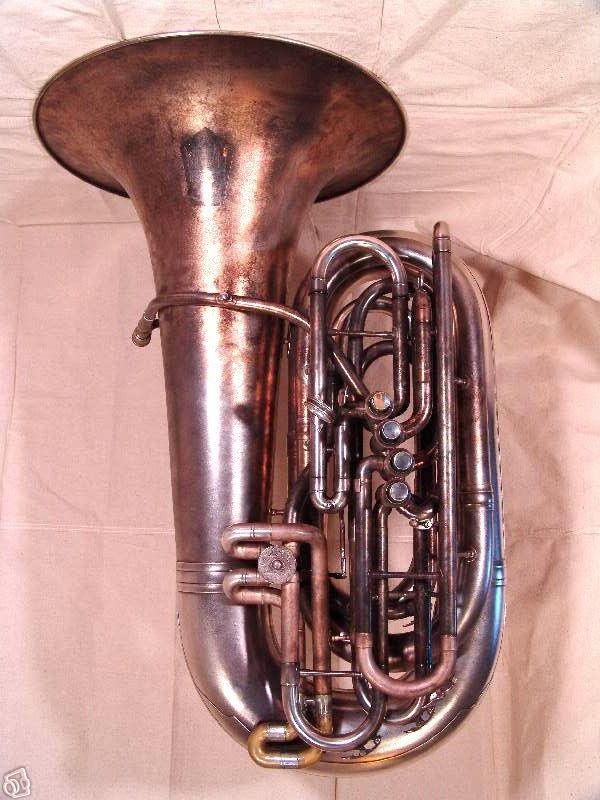Heh, heh. That sounds like the best idea I've heard so far.Junkyardslug wrote:I belive if you want a horn to look like the photo you posted of Dan Oberlon's work you want Satin Gold plate
JYS
Rick "bring your checkbook" Denney
Heh, heh. That sounds like the best idea I've heard so far.Junkyardslug wrote:I belive if you want a horn to look like the photo you posted of Dan Oberlon's work you want Satin Gold plate
JYS


I invested in a few tubs of Wright's Silver Cream, a bag of cloth t-shirt rags, and a lot of elbow grease. I didn't rub all that hard, and the t-shirt and Wrights were not abrasive. I would also dampen the shirt before putting the Wrights on. The trick was not to use too much cream or it would cake on the horn. A light film would be left after I was done, and I just wiped it off using a damp shirt. It worked well, but this was once a month process.Donn wrote:Silver tarnish is mysterious, maybe depends partly on environmental factors? I have a 1926 Evette saxophone with an excellent satin silver finish, and it has held up pretty well - in fact, since I've never tried to clean it, I'm wondering how you go about it? Just the same as a bright finish, or do you have to omit some of the rubbing to avoid polishing the finish off the tops of the bumps?Liberty Mo wrote:I owned a Satin Silver King 2341 that was a real pain in the rear to keep clean. When it was clean, it looked great, but I would have rather spent all of that time practicing.







What is the deal with a painted finish anyway? (What is it anyhow)...Is it just cheap? Does it affect sound? Bad..good? I really have no clue about finishes...besides the regular lacquer, silver and then some strange black or blue lacquers.TubaTinker wrote:Wasn't Yamaha doing some sort of strange finish on their Xeno trumpets? Don't know if it was plating or a painted finish.

From what I have seen and read... Yamaha wasn't too worried about applying a heavy coating to some of the XENO instruments as those horns are very heavy, double-braced, and intentionally made to play with a dark timbre. The real 'bugger' about some of the odd-ball finishes is that the horns can't be touched up after repair are made. Some of those XENO trumpets were shot blasted, plated, and then epoxy lacquered... I think.pierso20 wrote:What is the deal with a painted finish anyway? (What is it anyhow)...Is it just cheap? Does it affect sound? Bad..good? I really have no clue about finishes...besides the regular lacquer, silver and then some strange black or blue lacquers.TubaTinker wrote:Wasn't Yamaha doing some sort of strange finish on their Xeno trumpets? Don't know if it was plating or a painted finish.


Hi Dave, here it is (1927 Conn 38K):Dave Hayami wrote:Hello,
If Dave(Bandmaster) is reading this post, perhaps he will post a big picture of his Satin Gold Conn Sousaphone. Beautiful horn.
Dave "Saw it at TubaChristmas, DisneyLand"Hayami







Brass does not like most spray finishes unless the brass is VERY clean. The adhesive qualities of Krylon are about as good as any or the other 'rattle cans' but you are going to have to really clean the brass with something like acetone, MEK, or another one of those cancer-causing chemicals.Tubaryan12 wrote:Last night I polished a small area with Brasso and sprayed it with Krylon satin finish clear paint......
Is there a durable, rattle can spray finish you can put on a horn (the krylon was easy to remove by just scratching with a finger nail).

.....like Toluene, Xylene or Methylene Chloride? In my line of work, I have access to those above and more.TubaTinker wrote: The adhesive qualities of Krylon are about as good as any or the other 'rattle cans' but you are going to have to really clean the brass with something like acetone, MEK, or another one of those cancer-causing chemicals.